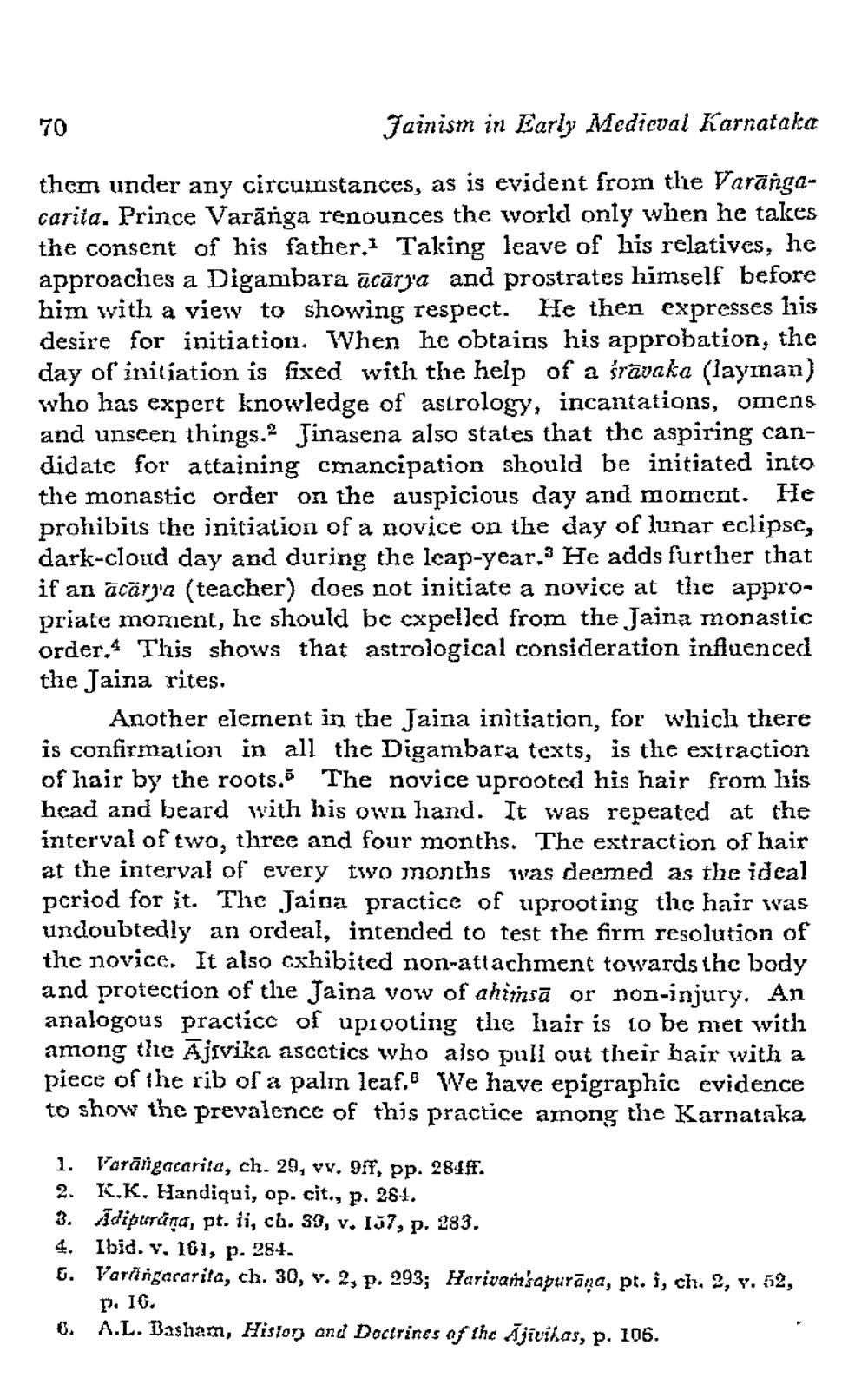________________
70
Jainism in Early Medicval Karnataka
them under any circumstances, as is evident from the Varangacarita. Prince Varānga renounces the world only when he takes the consent of his father. Taking leave of his relatives, he approaches a Digambara ācārya and prostrates himself before him with a view to showing respect. He then expresses his desire for initiation. When he obtains his approbation, the day of initiation is fixed with the help of a šravaka (layman) who has expert knowledge of astrology, incantations, omens and unseen things.2 Jinasena also states that the aspiring candidate for attaining cmancipation should be initiated into the monastic order on the auspicious day and moment. He prohibits the initiation of a novice on the day of lunar eclipse, dark-cloud day and during the leap-year. He adds further that if an ācārya (teacher) does not initiate a novice at the appropriate moment, he should be expelled from the Jaina monastic order.4 This shows that astrological consideration influenced the Jaina rites.
Another element in the Jaina initiation, for which there is confirmation in all the Digambara texts, is the extraction of hair by the roots. The novice uprooted his hair from his head and beard with his own hand. It was repeated at the interval of two, three and four months. The extraction of hair at the interval of every two months was deemed as the ideal period for it. The Jaina practice of uprooting the hair was undoubtedly an ordeal, intended to test the firm resolution of the novice. It also cxhibited non-attachment towards the body and protection of the Jaina vow of ahimsā or non-injury. An analogous practice of upiooting the hair is to be met with among the Ajivika ascctics who also pull out their hair with a piece of the rib of a palin leaf. We have epigraphic evidence to show the prevalence of this practice among the Karnataka
1. Varātigacarila, ch. 29, vv. 9ff, pp. 284ff. 2. K.K, Handiqui, op. cit., p. 284. 3. Adipurana, pt. ii, ch. 39, v. 157, p. 283. 4. Ibid. v. 101, p. 284. 6. Varlingacarita, ch. 30, v. 2, p. 293; Harivan'sapurāna, pt. i, ch. 2, v. 52,
p. 16.
6.
A.L. Basham, History and Doctrines of the Ājivihas, p. 106.




